The Ultimate Guide to Hard Money Lending Terminology: Top 100 Terms You Need to Know
Navigating the world of hard money lending can be complex, with many specialized terms and phrases unique to this type of financing. To help you better understand hard money lending, we’ve compiled an alphabetical list of the top 100 terms related to this niche lending landscape, complete with definitions. Whether you’re new to real estate investing or a seasoned pro, this comprehensive guide will help you confidently communicate with hard money lenders and evaluate loan offers.
- 1031 Exchange: A tax-deferred exchange that allows investors to sell an investment property and reinvest the proceeds in a new property, deferring capital gains taxes.
- Acquisition Cost: The total cost of acquiring a property, including the purchase price, closing costs, and any other fees or expenses associated with the transaction.
- Adjustable-Rate Mortgage (ARM): A mortgage with an interest rate that changes periodically based on a pre-determined index.
- After Repair Value (ARV): The estimated market value of a property once repairs and renovations are completed.
- Amortization: The process of paying off a loan over time through regular, scheduled payments of principal and interest.
- Amortization Schedule: A table detailing each periodic payment on an amortizing loan, showing the amounts applied to principal and interest, and the remaining balance after each payment.
- Annual Percentage Rate (APR): The annual cost of borrowing money, including interest and fees, expressed as a percentage.
- Appraisal: A professional assessment of a property’s value conducted by a licensed appraiser.
- Assignment of Contract: A legal transfer of contractual rights from one party to another.
- Balloon Payment: A large, lump-sum payment due at the end of a loan term after smaller, regular payments have been made.
- Blanket Mortgage: A single mortgage that covers multiple properties, often used by investors with a large portfolio.
- Bridge Loan: A short-term loan used to “bridge” the gap between purchasing a new property and selling an existing one or securing long-term financing.
- Broker’s Price Opinion (BPO): A real estate agent’s or broker’s estimate of a property’s value, often used in place of an appraisal.
- Buy and Hold Strategy: A long-term investment approach in which an investor purchases properties and holds them for rental income and potential appreciation.
- BRRR Strategy (Buy, Rehab, Rent, Refinance, Repeat): A real estate investment strategy involving the purchase and renovation of properties for rental purposes, followed by refinancing to recover initial investment costs.
- Cap Rate (Capitalization Rate): A metric used to evaluate the profitability of a real estate investment, calculated by dividing the net operating income by the property’s current market value.
- Capital Expenditure (CapEx): Funds used to acquire, upgrade, or maintain a property or its assets, such as major repairs, improvements, or expansions.
- Cash Flow: The net income generated by a property after accounting for all expenses, including mortgage payments, taxes, insurance, and maintenance.
- Cash-Out Refinance: A refinancing option in which a new mortgage replaces the existing one and the borrower receives the difference in cash.
- Certificate of Occupancy (CO): A document issued by a local government agency certifying that a building is in compliance with building codes and is safe for occupancy.
- Closing Costs: The various fees and expenses associated with finalizing a real estate transaction, such as origination fees, title insurance, and recording fees.
- Closing Statement: A document that details the final financial terms and conditions of a real estate transaction, including the sales price, loan amount, and closing costs.
- Co-Borrower: An additional borrower on a loan who shares responsibility for repayment and whose income and credit history are considered in the loan approval process.
- Collateral: An asset, such as real estate, pledged as security for a loan, which the lender can seize and sell if the borrower defaults.
- Commercial Mortgage-Backed Securities (CMBS): Bonds backed by a pool of commercial mortgages and sold to investors.
- Commercial Property: A property used for business purposes, such as office buildings, retail centers, or industrial facilities.
- Comparable Sales (Comps): Recent sales of similar properties in the same area used to help determine the market value of a property.
- Conforming Loan: A mortgage loan that meets the underwriting guidelines set by Fannie Mae and Freddie Mac, which allows it to be sold on the secondary mortgage market.
- Construction Holdbacks: Funds withheld by a lender during the construction process, to be released upon the completion of specific milestones or the completion of the project, ensuring that construction progresses according to plan.
- Conventional Loan: A mortgage that is not insured or guaranteed by the federal government, typically requiring a larger down payment and higher credit score than government-backed loans.
- Cost of Funds Index (COFI): An index used to determine interest rates for some adjustable-rate mortgages, based on the weighted average cost of funds to financial institutions in a specific region.
- Credit Score: A numerical representation of an individual’s creditworthiness, based on their credit history and current financial standing.
- Cross-collateralize: Using multiple properties as collateral for a single loan, increasing the lender’s security in the event of default.
- Days on Market (DOM): The number of days a property has been listed for sale.
- Debt Service Coverage Ratio (DSCR): A financial metric used to assess a borrower’s ability to repay a loan, calculated by dividing the property’s net operating income by its total debt service.
- Debt-to-Income Ratio (DTI): A personal finance measure comparing a borrower’s monthly debt payments to their gross monthly income, used by lenders to evaluate creditworthiness.
- Deed in Lieu of Foreclosure: A voluntary transfer of property ownership from a borrower to a lender in exchange for release from mortgage obligations, used as an alternative to foreclosure.
- Default: Failure to meet the terms of a loan agreement, such as missing payments, which can result in foreclosure or other legal actions.
- Direct Lender: A financial institution that originates and funds loans directly, without using intermediaries such as brokers or loan officers.
- Discount Points: A fee paid to a lender at closing in exchange for a reduced interest rate on a mortgage.
- Distressed Properties: Properties in poor condition or facing foreclosure, often sold at a discount.
- Document Preparation Fee: A fee charged by a lender or attorney for preparing the necessary paperwork for a loan or real estate transaction.
- Down Payment: The initial cash payment made by a buyer towards the purchase price of a property, with the remaining balance financed through a mortgage.
- Draw Schedule: A predetermined timetable for disbursing funds from a construction or rehab loan, typically based on the completion of specific project milestones.
- Due Diligence: The process of investigating and verifying the details of a property, including its condition, title, and financial history, before finalizing a real estate transaction.
- Due-on-Sale Clause: A provision in a mortgage contract that requires the borrower to pay off the loan in full when the property is sold or transferred, preventing the new owner from assuming the existing mortgage.
- Earnest Money: A deposit made by a buyer to demonstrate their commitment to purchasing a property, often refundable if certain contingencies are not met.
- Encroachment: The unauthorized extension of a structure or other improvement onto a neighboring property, potentially leading to legal disputes and affecting property value.
- Equity: The difference between a property’s market value and the outstanding balance on any loans or liens against it.
- Escrow Account: A third-party account used to hold funds during a real estate transaction, ensuring that all parties meet their financial obligations.
- Exit Strategy: A plan for selling or refinancing a property to recoup investment costs and generate a return.
- Federal Housing Administration (FHA) Loan: A government-backed mortgage with lower credit and down payment requirements, designed to help first-time homebuyers and those with limited resources.
- Fix and Flip Loan: A short-term loan used to purchase and renovate a property before selling it for a profit.
- Flood Insurance: Insurance coverage protecting a property owner from financial losses due to flood damage.
- Foreclosure: The legal process by which a lender reclaims and sells a property when the borrower defaults on their mortgage obligations.
- Funding Fee: A one-time fee charged by some lenders, often government-backed loans, to offset the costs of administering and insuring the loan.
- Good Faith Estimate (GFE): A document provided by a lender that outlines the estimated costs associated with a mortgage, including interest rates, fees, and closing costs.
- Guarantor: An individual or entity that agrees to repay a loan on behalf of a borrower in case the borrower defaults on their payment obligations.
- Hard Money Loan: A short-term, asset-based loan used by real estate investors, typically with higher interest rates and fees than conventional loans.
- Home Equity Line of Credit (HELOC): A revolving line of credit secured by a borrower’s home, allowing them to access funds as needed, up to a predetermined limit.
- Home Equity Loan: A loan based on the equity in a borrower’s home, often used for home improvements or debt consolidation.
- Home Inspection: A professional assessment of a property’s condition, used to identify potential issues and inform the negotiation process.
- Homeowners Association (HOA) Fee: A fee paid by property owners within a planned community or condominium to cover the costs of maintaining and improving shared spaces and amenities.
- Homeowners Insurance: Insurance coverage that protects a property owner from financial losses related to damage or destruction of their home and personal belongings.
- Interest-Only Loan: A type of mortgage where the borrower only pays the interest on the loan for a specified period, after which the loan balance begins to amortize.
- Jumbo Loan: A mortgage that exceeds the conforming loan limits set by Fannie Mae and Freddie Mac, often requiring a larger down payment and stricter qualification criteria.
- Lease Option: A contract that allows a tenant to lease a property with the option to purchase it at a predetermined price within a specified time frame.
- Loan Modification: An agreement between a borrower and lender to change the terms of an existing loan, often to help the borrower avoid foreclosure or reduce their monthly payments.
- Loan-to-Cost Ratio (LTV): The ratio is calculated by dividing the loan amount by the total cost of a real estate project, which includes acquisition, construction, and soft costs. The resulting ratio, expressed as a percentage, represents the proportion of the project’s financing provided by the lender.
- Loan-to-Purchase Price Ratio (LTV): LTPP ratio is calculated by dividing the loan amount by the property’s purchase price. The resulting ratio, expressed as a percentage, represents the proportion of the property’s purchase price financed by the lender.
- Loan-to-Value Ratio (LTV): A financial metric used by lenders to assess the risk of a loan, calculated by dividing the loan amount by the appraised value of the property.
- Mortgage Insurance: Insurance coverage that protects a lender from losses in the event of borrower default, typically required for loans with a high LTV ratio or low down payment.
- Mortgage Points: A fee paid by a borrower to reduce the interest rate on a mortgage, with each point typically equal to 1% of the loan amount.
- Net Operating Income (NOI): The total income generated by a property, minus operating expenses, used to evaluate the profitability of an investment.
- Non-Conforming Loan: A mortgage loan that does not meet the underwriting guidelines set by Fannie Mae and Freddie Mac, often due to factors such as loan size or borrower creditworthiness.
- Non-Recourse Loan: A loan that limits a lender’s ability to recover losses in the event of default, typically by allowing them to seize only the collateral property, rather than pursuing the borrower’s personal assets.
- Origination Fee: A fee charged by a lender for processing and underwriting a loan, often expressed as a percentage of the loan amount.
- Points: Fees paid by a borrower to a lender, usually in exchange for a lower interest rate on a mortgage, with each point equal to 1% of the loan amount.
- Portfolio Loan: A mortgage that is held and serviced by the original lender, rather than being sold to a secondary market investor.
- Pre-Approval: A preliminary evaluation by a lender of a borrower’s ability to qualify for a mortgage, based on their credit, income, and employment history.
- Pre-Qualification: A basic assessment of a borrower’s ability to obtain a mortgage, typically based on self-reported financial information and without a thorough credit check.
- Private Mortgage Insurance (PMI): Insurance coverage that protects a lender from losses in the event of borrower default, typically required for loans with a down payment of less than 20% of the property value.
- Property Management Fee: A fee paid to a property manager for overseeing the day-to-day operations and maintenance of a rental property.
- Real Estate Owned (REO): A property that has been foreclosed on and is now owned by a bank or financial institution, often sold at a discounted price.
- Refinance: The process of replacing an existing mortgage with a new one, often to obtain a lower interest rate or change the loan terms.
- Rent-to-Own: A contract that allows a tenant to rent a property with the option to purchase it at a predetermined price within a specified time frame, with a portion of the rent payments applied towards the purchase price.
- Reverse Mortgage: A type of home loan available to homeowners aged 62 or older, allowing them to convert a portion of their home equity into cash, with repayment deferred until the homeowner dies, sells the property, or moves out permanently.
- Second Mortgage: A mortgage taken out on a property that already has an existing mortgage, often used to access home equity for various purposes.
- Seller Financing: A financing arrangement in which the seller of a property provides a loan to the buyer, typically as a second mortgage, to help cover the purchase price.
- Short Sale: A property sale in which the proceeds are less than the outstanding balance of the mortgage, often used as an alternative to foreclosure.
- Subprime Mortgage: A mortgage offered to borrowers with a poor credit history or other risk factors, often carrying higher interest rates and fees to compensate for the increased risk to the lender.
- Tax Lien: A legal claim by a government entity against a property due to the owner’s unpaid taxes, which must be satisfied before the property can be sold or refinanced.
- Title Insurance: Insurance coverage that protects property owners and lenders from financial losses related to disputes over property ownership or defects in the title.
- Underwriting: The process of evaluating the risk of insuring or lending to a potential borrower or property owner, based on factors such as credit, income, and property value.
- Usury: The practice of charging excessive, unreasonably high, or illegal interest rates on loans, which is prohibited in many jurisdictions.
- VA Loan: A mortgage guaranteed by the U.S. Department of Veterans Affairs, available to eligible veterans, active-duty service members, and certain surviving spouses, with benefits such as no down payment and competitive interest rates.
- Variable-Rate Mortgage: A mortgage with an interest rate that can change over time, typically based on fluctuations in a specified benchmark interest rate.
- Wraparound Mortgage: A secondary mortgage that “wraps around” an existing mortgage, allowing a new borrower to assume the payments of both loans, with the new lender responsible for forwarding the appropriate portion of the payments to the original lender.
- Yield Spread Premium (YSP): A fee paid by a mortgage lender to a mortgage broker for originating a loan with a higher interest rate than the borrower qualifies for, which is then used to cover the broker’s commission.
- Zoning: The classification and regulation of land use by local governments, dictating the types of structures and activities allowed in specific areas.
Understanding the terminology related to hard money lending can be crucial to your success in real estate investing. This comprehensive list of the top 100 terms will help you better communicate with lenders, evaluate loan offers, and navigate the world of hard money lending with confidence. Use this guide as a resource to expand your knowledge and empower your decision-making as you pursue your real estate investment goals.




